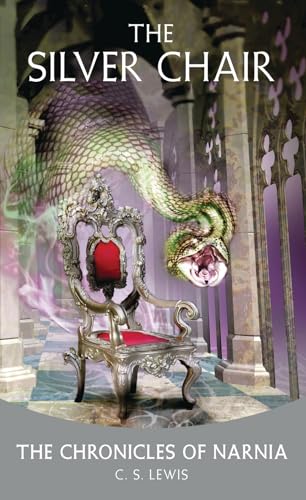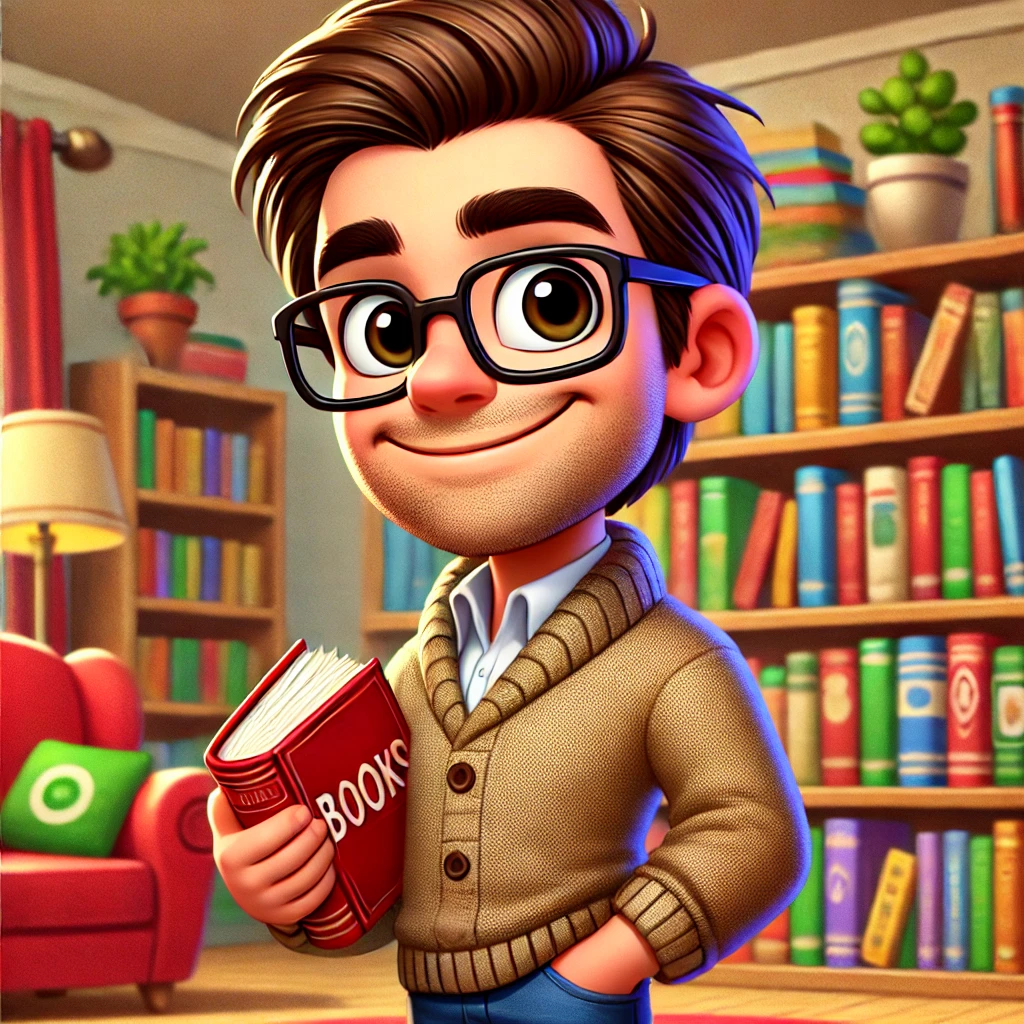Welcome, fellow book adventurers! Today, I’m bringing you my review of The Silver Chair. If you thought you had seen all the weird stuff Narnia can throw at you, think again. This book has it all—friendships, puzzles, way too many underground tunnels, and a giant snake that I still have bad dreams about. I read this one with a trusty cup of cocoa and a friend who kept losing their place because they were laughing at my running commentary. Buckle up, because I’m going to tell you what’s great, what’s not-so-great, and why you might want to keep a flashlight handy if you decide to read this book!
Book Review: The Silver Chair
In a nutsheel
The Silver Chair is a classic fantasy novel written by C.S. Lewis. It’s the fourth book in the Narnia series, and boy, did my friends and I argue about if it should be read before The Horse and His Boy (don’t ask, the snacks got heated). This story lands smack-dab in the fantasy genre, with magic, talking creatures, and kids getting whisked away to a strange world.
The book follows two kids, Jill and Eustace, who get asked, by a very big lion with bigger plans, to go on a rescue mission in the strange land of Narnia. Along the way, they meet oddball friends, solve tricky puzzles, and face tough choices. Themes like friendship, courage, sticking to your word, and hope pop up all the time. Some parts get a bit spooky, and there’s always a sense of wonder (and maybe a touch of “Did I remember to do my homework?”).
C.S. Lewis does a lovely job blending real-life problems and magical settings, so you feel both nervous and excited for the kids. I won’t spoil anything, but if you love quests, weird creatures, and clever lessons hidden in your adventures, this book is for you. Even if you don’t, it’s still worth checking out (unless you’re allergic to marshwiggles).
The Wobbly but Wonderful Friendship of Jill and Eustace in The Silver Chair
Let me tell you, Jill and Eustace are not your average dynamic duo. In The Chronicles of Narnia: The Silver Chair, these two start off as almost-perfect strangers with only one thing in common: their dislike for bullies at school. I like to think of them as the odd socks of the Narnia universe. Honestly, if you saw their first few chats, you’d think their next adventure would be arguing over a lost pencil, not saving a lost prince.
But here’s the fun part—once they crash into Narnia (literally, of course, because it wouldn’t be fun if they just calmly walked in), there’s no one else for company but each other and a marshwiggle named Puddleglum. This is where the magic happens and their friendship gets tested. Nothing brings people together like freezing cold, hunger, scary owls, and being chased by witches. Trust me, I once bonded with a friend over a lost pizza order, so saving a prince is next level.
Jill starts out scared but gutsy, and Eustace, fresh off his not-so-great performance as a dragon in the last book, is trying to be more helpful this time. They bicker, they mess things up, but every bad choice brings them closer. They even support each other when they forget Aslan’s instructions (oops). Somehow, by the end, they’ve gone from awkward classmates to true pals—the kind who’d help you fight an evil witch or, at least, share the last biscuit.
Now, if you’re curious how Aslan makes their brains work overtime with some mind-bending puzzles and tests, you’d better buckle up, because the next section is about to get wild!
Puzzles, Tests, and Talking Lions: Aslan’s Mysterious Missions
Let’s just say if you thought high school pop quizzes were tough, you haven’t met Aslan’s brain teasers in The Chronicles of Narnia: The Silver Chair. Aslan doesn’t hand out instructions like IKEA does (and thank goodness for that, because I’d still be missing three screws). Instead, he gives Jill a list of four signs that she and Eustace have to remember to follow, or else things in Narnia go sideways fast. And trust me, remembering all four is as easy as keeping my grandma’s Wi-Fi password in my head.
What makes it even better/worse is Aslan’s rules never come with a cheat sheet. Jill and Eustace get some tough lessons, like listening carefully (which is hard when you’re hungry and lost, by the way), looking for the right people, and reading between the lines. This is not your average scavenger hunt—this is a magical lion setting up moral tests that teach you a thing or two about trust, faith, and not being a total dunderhead. I won’t spoil it, but let’s just say some of these puzzles had me yelling at the book, “No, not that way!”
On the plus side, these magical instructions keep the story going and made me think more than any crossword puzzle. On the downside, I kept waiting for Aslan to pop up again and say, “You messed up, Steve!” But hey, learning from mistakes is half the fun (or misery) in Narnia.
Now, if you think puzzles are tricky, wait until you see the dark caves and creepy vibes in the underground world. Bring a flashlight, folks!
The Creepy World Beneath: Shadows, Stones, and the Silver Chair’s Gloomiest Bits
Let’s talk about the dark mood and the underground world in The Chronicles of Narnia: The Silver Chair. Now, I’m not scared of the dark. Well, maybe a little, but not enough to stop reading. But wow, if you ever wondered what it’s like to live in a place where the sun never shines and everything smells like old socks, this book lets you know! The Underland is not your happy, chirpy Narnia. The caverns are endless, the walls drip with water, and there are more grumpy gnomes than you can count on both hands.
Walking through this underground world with Jill, Eustace, and Puddleglum felt like being stuck in a basement full of lost Christmas decorations—and angry, homesick creatures. I found myself wishing for some sunlight and a strong cup of tea (and I don’t even like tea that much!). The Lady of the Green Kirtle has made this place the definition of miserable. It’s all so tense, I almost chewed my fingernails down to my elbows (which, by the way, is not possible—I checked).
The book does a great job making you feel the weight of the underground. You can almost smell the damp stone. It’s both exciting and a bit much at times, so if you love adventure but don’t want to feel a little gloomy, brace yourself.
But here’s the thing—right when it feels like there’s no way out, something happens that shines a light in the darkness. And that, dear reader, is where hope and rescue swoop in like a pie at a hungry picnic. Stay tuned!
The Light at the End of the Tunnel: Hope and Rescue in The Chronicles of Narnia The Silver Chair
Let’s talk about hope. Not the kind you get when you see fries left at the bottom of the bag (though, honestly, that’s pretty good hope). I mean real, bone-deep hope. The kind Jill, Eustace, and our poor lost Prince Rilian cling to in The Chronicles of Narnia The Silver Chair when things seem as dark as my ability to find matching socks in the morning.
After dealing with witches, giants, and some pretty questionable menu options, rescuing Prince Rilian seems like trying to solve a Rubik’s Cube blindfolded. But here’s the thing – in Narnia, hope is never just wishful thinking. It’s stubborn. It’s loud. And sometimes, it’s the only light these characters have while crawling through mud, lies, and (let’s be honest) some pretty grumpy gnomes.
The rescue isn’t only about breaking chains. To me, it’s about finding that spark inside yourself when everything outside is saying “give up.” I’ll admit, as a kid reading this, I tried rescuing my neighbor’s goldfish from a fake castle and got grounded for flooding the kitchen. Not my best moment, but hey, it taught me that rescue takes guts – and sometimes a mop.
Hope, as this book shows, isn’t passive. Jill and Eustace don’t just sit around wishing things would get better. They act. They fail. They try again. And Narnia rewards them (well, after making them suffer a bit, because C.S. Lewis never makes anything easy).
In short, The Silver Chair delivers a hopeful punch to the face when you need it most. Is it worth reading? Absolutely. If you don’t leave with a sense of hope (and maybe a little dirt in your shoes), you did it wrong!
Conclusion
Well, there you have it! My wild ride through The Silver Chair comes to a screeching halt. This book gave me talking owls, puzzles from a big lion, and more underground weirdness than my cousin’s old basement. I loved the fun mix of adventure and real-life feelings, like being brave when you feel like a wet sock. Is it perfect? No—sometimes the plot trips over its own shoelaces and Jill can be a bit of a grump. But the good stuff wins out. If you want old-school magic with bumpy but honest friendships, this one’s a winner. Plus, you can always pretend you’re a marsh-wiggle at your next party. That’s it from me—thanks for tagging along on my Narnian quest!


